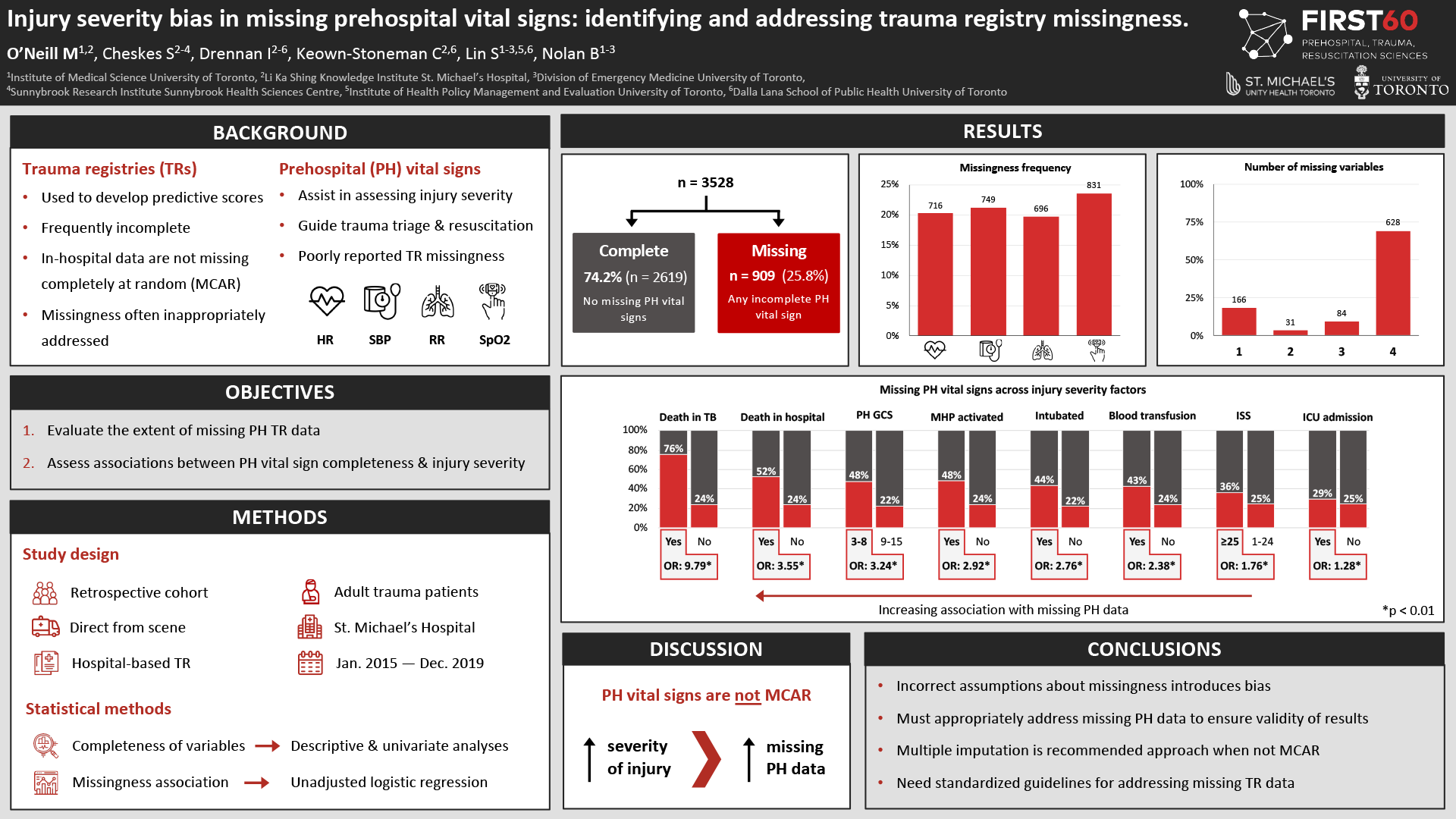
|
Injury severity bias in missing prehospital vital signs: identifying and addressing trauma registry missingness. Authors: Melissa O’Neill1,2, Sheldon Cheskes2-4, Ian Drennan2-6, Charles Keown-Stoneman2,6, Steve Lin1-3,5,6, Brodie Nolan1-3 Abstract: Results: A total of 3,528 patients were included. We considered prehospital data missing if any of heart rate, systolic blood pressure, respiratory rate or oxygen saturation were incomplete. Each individual variable was missing from the registry in approximately 20% of patients, with oxygen saturation missing most frequently (n=831; 23.6%). Over 25% (n=909) of patients were missing at least one prehospital vital sign, of which 69.1% (n=628) were missing all four of these variables. Patients with incomplete data were more severely injured, had higher mortality, and more frequently received lifesaving interventions such as blood transfusion and intubation. Patients were most likely to have missing prehospital physiological data if they died in the trauma bay (unadjusted OR: 9.79; 95% CI: 6.35-15.10), did not survive to discharge (unadjusted OR: 3.55; 95% CI: 2.76-4.55), or had a prehospital GCS less than 9 (OR: 3.24; 95% CI: 2.59-4.06). Conclusions: In this single centre trauma registry, over 25% of patients were missing key prehospital variables. Missing prehospital vital signs were more frequent among more severely injured patients. Death in the trauma bay and in-hospital mortality were most strongly associated with missing physiological data. This injury severity bias suggests that these data are not missing completely at random, and therefore need to be addressed appropriately to ensure their validity. |
Melissa is a PhD candidate in the Institute of Medical Science at University of Toronto with an interest in prehospital trauma care, resuscitation, and hemorrhage management. Under the supervision of Dr. Brodie Nolan at St. Michael's Hospital, her thesis


